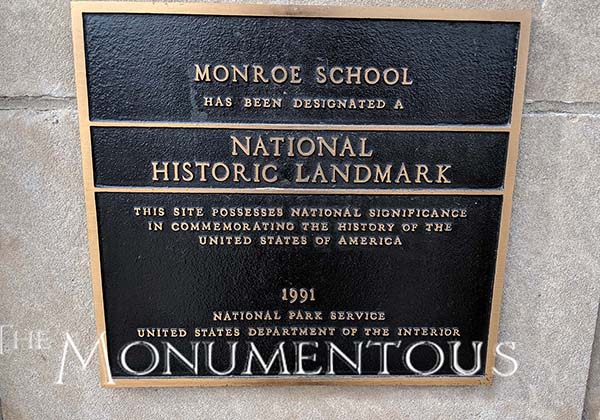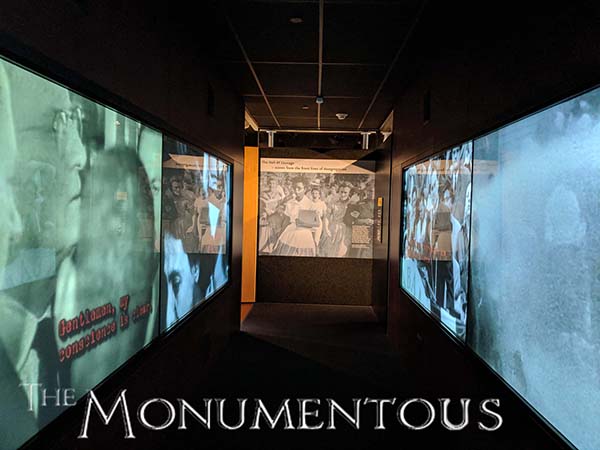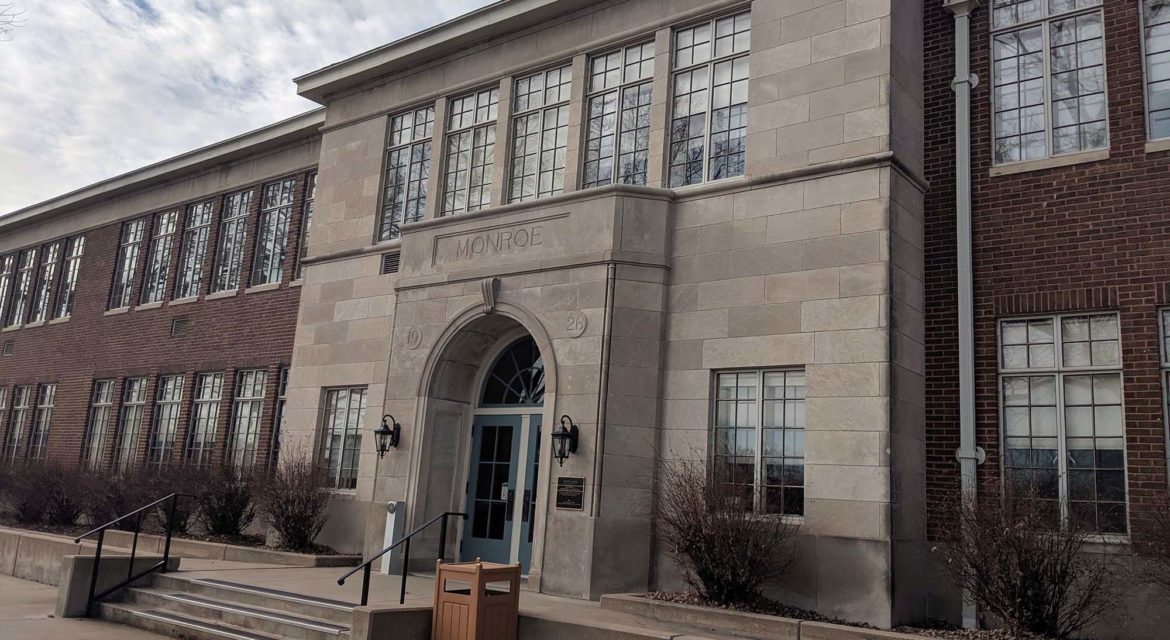 Located in Topeka, Kansas, the Brown v. Board of Education National Historic Site commemorates the landmark U.S. Supreme Court decision aimed at ending racial segregation in public schools. The site consists of the former Monroe Elementary School where the case originated from and showcases what it can mean to turn a piece of history into a monument.
Located in Topeka, Kansas, the Brown v. Board of Education National Historic Site commemorates the landmark U.S. Supreme Court decision aimed at ending racial segregation in public schools. The site consists of the former Monroe Elementary School where the case originated from and showcases what it can mean to turn a piece of history into a monument.
In doing so, the site has come to represent the power of monuments to both attract and educate audiences from all over the world about essential pieces of local and national history.

“Separate but Equal” Inherently Unequal
 Monroe Elementary School was one of four segregated elementary schools for African Americans in Topeka, Kansas. The current building was constructed in 1926 and it functioned as a school up to and through the historic Brown v. Board of Education ruling. The case began with a 1951 class-action suit that was filed against the Board of Education of the City of Topeka, Kansas. The plaintiffs were thirteen Topeka parents on behalf of their 20 children, but the case was named for one of the plaintiffs, Oliver Brown.
Monroe Elementary School was one of four segregated elementary schools for African Americans in Topeka, Kansas. The current building was constructed in 1926 and it functioned as a school up to and through the historic Brown v. Board of Education ruling. The case began with a 1951 class-action suit that was filed against the Board of Education of the City of Topeka, Kansas. The plaintiffs were thirteen Topeka parents on behalf of their 20 children, but the case was named for one of the plaintiffs, Oliver Brown.
Handed down on May 17, 1954, the Supreme Court’s unanimous (9–0) decision stated that “separate educational facilities are inherently unequal,” and therefore violated the Equal Protection Clause of the Fourteenth Amendment of the U.S. Constitution. The case led to the opening and integration of schools across the entire country over the following years.
The ramifications of the ruling have been felt across the decades, although the Monroe Elementary School building itself also went through some notable changes. The school was closed in 1975 due to declining enrollment and then changed ownership several times. At one point it was set to be turned into a warehouse.
 An effort to create a public discourse around the ongoing impact and significance of Brown v. Board of Education helped save the building. The Monroe Elementary School would achieve a National Historic Landmark designation in 1987 and became a national park with the establishment of the Brown v. Board of Education National Historic Site Act of 1992.
An effort to create a public discourse around the ongoing impact and significance of Brown v. Board of Education helped save the building. The Monroe Elementary School would achieve a National Historic Landmark designation in 1987 and became a national park with the establishment of the Brown v. Board of Education National Historic Site Act of 1992.
The history that the building was saved to protect is reflected in numerous was across the Brown v. Board of Education National Historic Site. Critically though, there are many ways for audiences to both see and interact with this history.

Words, Deeds and Experiences
 The Monroe School has become a symbol of the importance of equal educational opportunities. Visitors can walk its halls and imagine what it was like to attend a segregated school while exploring the history of Brown v. Board of Education by viewing and engaging with the many exhibits located throughout the building.
The Monroe School has become a symbol of the importance of equal educational opportunities. Visitors can walk its halls and imagine what it was like to attend a segregated school while exploring the history of Brown v. Board of Education by viewing and engaging with the many exhibits located throughout the building.
All of the exhibits provide visitors with distinct experiences. In the Auditorium, visitors can watch a film that traces the history of racism and segregation. In another section, the “Education and Justice” exhibit examines the barriers African Americans faced while trying to receive formal education from the early 19th century through the Brown v. Board of Education decision. The interactive “Legacy of Brown v. Board of Education” gallery allows visitors to explore exhibits relating to the civil rights movement that followed in the wake of the ruling. Visitors can add their own personal notes to the walls, enabling another powerful level of engagement.
These exhibits and displays showcase the history of and around the Brown v. Board of Education ruling, but the “Expression and Reflections” area showcases an entirely different piece of history. The room is a presentation of what a kindergarten class would have looked like in the Topeka public schools in the early 1950s.
In the bookstore, visitors can purchase a number of items for sale that further explore and showcase the history throughout the building. There are a wide range of educational publications and products available for purchase in the bookstore, some of which are directly related to the Brown v. Board of Education National Historic Site.
By creating such powerful experiences that visitors can engage with in different ways, the Brown v. Board of Education National Historic Site has become an essential element of the surrounding Topeka community that attracts audiences from all over. In doing so, it has come to showcase how the history of a place and time can become a legacy for people across nations and eras.

Preserving the Legacy of the Fight for Equal Educational Opportunity
 Many monuments have actively embraced the history they contain to create experiences for audiences while also generating revenue for stakeholders. Those types of experiences have been enabled across the Brown v. Board of Education National Historic Site while revenue opportunities have been opened up for the site in the bookstore. However, by being embraced by the surrounding community while also being representative of such an important movement for the United States, the Monroe School has become part of a larger legacy that speaks to something far more important.
Many monuments have actively embraced the history they contain to create experiences for audiences while also generating revenue for stakeholders. Those types of experiences have been enabled across the Brown v. Board of Education National Historic Site while revenue opportunities have been opened up for the site in the bookstore. However, by being embraced by the surrounding community while also being representative of such an important movement for the United States, the Monroe School has become part of a larger legacy that speaks to something far more important.
The Brown v. Board of Education ruling paved the way for public school integration and was a major victory of the Civil Rights Movement. By celebrating this history in such an active manner, the site has come to serve as an essential reminder for those in the present and future about what the struggle for equal educational opportunity looks like and represents. Doing so has ensured that it will remain an important monument for Topeka, for Kansas and to the entire United States.

